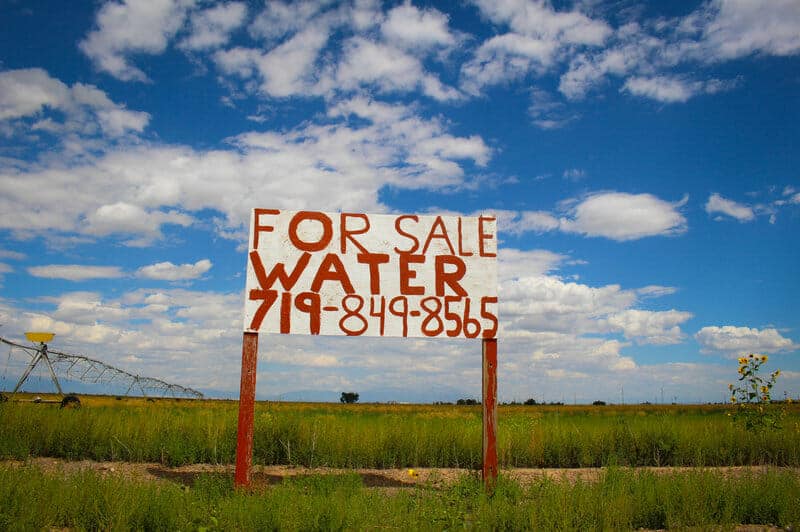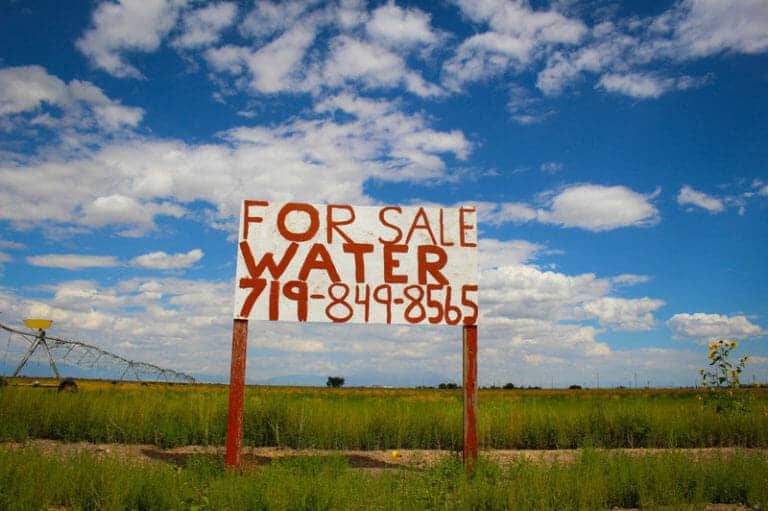A sign advertising a water sale sits on a farm outside Del Norte, Colorado.
The Western U.S. is just starting to recover after a prolonged, 16-year drought.
A lack of water can force people to take a hard look at how they use it, and make big changes. That’s what happened in southern Colorado, where farmers have tried a bold experiment: They’re taxing themselves to boost conservation.
Colorado’s San Luis Valley is a desperately dry stretch of land, about the same size as New Jersey. Doug Messick manages potato farms for the valley’s Spud Grower Farms. This fall, his fields were full of Russets — the kind you’d use for a loaded baked potato. Hanging from a metal arm above the plants, dozens of nozzles spray down perfect little water droplets.
The irrigation water keeps the fields green. Without it, this valley is just a desert. Messick pumps water from a shallow aquifer under our feet. Today there’s enough to keep it running. When that epic drought started 16 years ago, “the aquifer was declining,” Messick says. “But nobody really started noticing until they started sucking air instead of water back in the early 2000s.”
Suddenly the valley’s seemingly […]
Full article: To Save Their Water Supply, Colorado Farmers Taxed Themselves
More about the Colorado River water and the state of Colorado:
- PARCHED: Climate change and growth are pushing Colorado toward a water crisis
- Plan for Colorado River draws on Blue Mesa, Flaming Gorge reservoirs
- The Colorado River is evaporating, climate change largely to blame
- Water a focus for growing northern Colorado communities
- Water under Colorado’s Eastern Plains running dry as farmers keep irrigating “great American desert”
- U.S.A. and Mexico agree to share a shrinking Colorado River
- Rising temperatures sucking water out of the Colorado River
- Colorado River v. State of Colorado
- SCOTUS: Upstream States to Reduce River Usage, Aid Downstream States in Drought
Related content by our editor:



